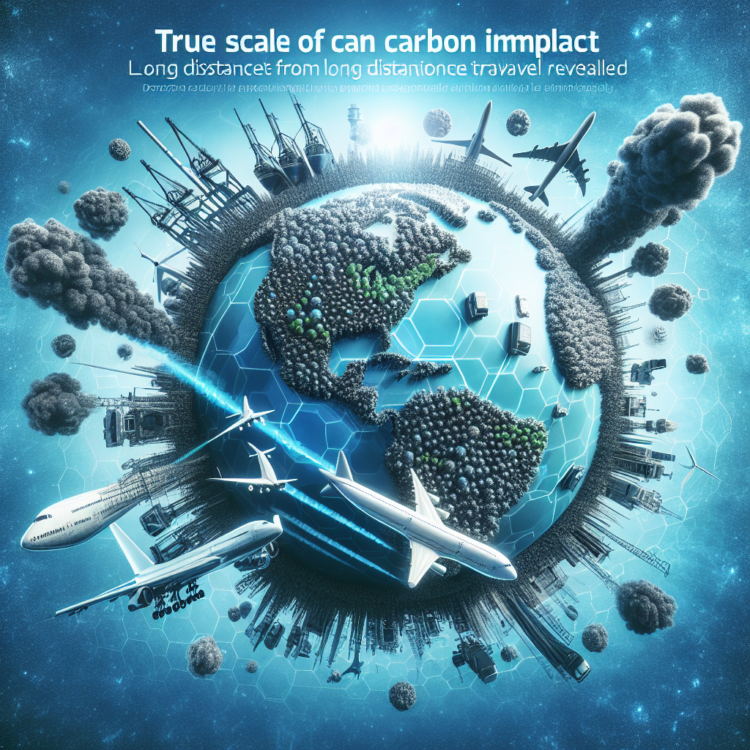The reality of the climate impact of long-distance passenger travel has been revealed in new research from the University of Leeds.
The reality of the climate impact of long-distance passenger travel has been revealed in new research from the University of Leeds.
Despite only accounting for less than 3% of all trips by UK residents, journeys of more than 50 miles (one way) are responsible for 70% of all passenger travel-related carbon emissions.
The disparity is even greater when international travel is singled-out: international journeys are only 0.4% of total trips but are responsible for 55% of emissions.
The new research, published today in the journal Nature Energy, also shows that targeting long-distance travel may be a more effective way of tackling emissions than current efforts which focus on local and commuter journeys.
Whilst the number of long and short distance domestic journeys by car have fallen slightly over the last 25 years, international air travel has increased significantly, driven by an increase in trips for leisure and visiting friends and family.
Dr Zia Wadud from the University’s Institute for Transport Studies and School of Chemical and Process Engineering and who led the research, said: “The scale of the impact of long-distance travel is very large indeed. That just less than 3% of our trips are responsible for around 60% of miles and 70% of emissions shows how important long-distance travel is in the fight to combat climate change.
“Worryingly, long distance trips, especially flights, have been growing; however, they offer opportunities too.”
Using a new metric they have created, called emission reduction sensitivity, the research team has calculated which types of travel could be changed to maximise a reduction in carbon emissions from passenger travel whilst affecting as few people or trips as possible.
Greater potential from reducing long-distance travel
The research found that if all car journeys under eight miles were shifted to walking or cycling, there would be a 9.3% reduction in carbon emissions. However, around 55% of all journeys would need to be shifted to achieve this, as most travel is done locally and in cars.
Calculated by dividing the carbon reduction percentage by the percentage of journeys altered, the emission reduction sensitivity for this change would be just 0.17 – the lowest recorded in the study.
By contrast, if all flights of less than 1,000 miles were moved to rail, there would be a 5.6% reduction in emissions but only 0.17% of journeys would be affected – resulting in a sensitivity value of 33.2.
At the top end, theoretically limiting everyone who flies now to one return flight abroad per year would have a value of 158.3, as so few journeys would be affected.
The researchers stress that the potential changes are only suggestions meant to make us realise and reassess the impact of our long-distance travel, rather than concrete policy proposals.
Dr Muhammad Adeel, a co-author now at the Centre for Transport and Society at the University of the West of England, added: “Whilst efforts to move local journeys to more sustainable modes of transport are really positive, by omitting aviation emissions from national statistics – as is the case at the moment in nearly all countries – we are not getting a holistic picture and ignoring a large part of the problem.”
A call to rethink our travel’s carbon impact
The researchers also hope that their findings can act as a driver for policymakers to look at changes in how effort is assigned when dealing with the impact of travel on the environment.
The data was collected from the Department for Transport’s National Travel Survey, and the International Passenger Survey, which is organised by the Office for National Statistics.
The research also offers the public an insight into the impact that changing their behaviour could have.
Dr Wadud added: “The important thing both at the policy and personal level is that we prioritise the relatively fewer longer distance trips – especially flights – in order to realize the largest reductions.”
Ends
Journal
Nature Energy
Method of Research
Data/statistical analysis
Subject of Research
Not applicable
Article Title
Casting a long shadow: the role of long distance travel in carbon emissions from and decarbonisation of passenger travel
Article Publication Date
2-Jul-2024




